 W
WAnolis biporcatus, also known as the neotropical green anole or giant green anole, is a species of anole. It is found in forests, both disturbed and undisturbed, in Mexico, Central America, Colombia and Venezuela. More southern populations, in southwestern Colombia and western Ecuador, were recognized as a separate species, A. parvauritus, in 2017.
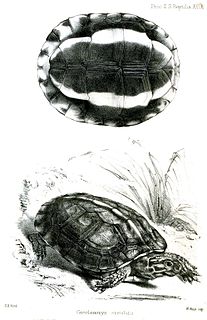 W
WThe brown wood turtle or brown land turtle is a species of turtle in the family Geoemydidae. The species is endemic to Central America and northern South America.
 W
WThe spectacled caiman, also known as the white caiman, common caiman, and speckled caiman, is a crocodilian in the family Alligatoridae. It is brownish-, greenish-, or yellowish-gray colored and has a spectacle-like ridge between its eyes, which is where its common name come from. It grows to a length of 1.4–2.5 metres (4.6–8.2 ft) and a weight of 7–40 kilograms (15–88 lb), with males being both longer and heavier than females. Its diet varies seasonally, commonly consisting of crabs, fish, mammals, and snails. Breeding occurs from May to August and 14–40 eggs are laid in July and August. This crocodilian has a large range and population, native to much of Latin American and introduced to the United States.
 W
WThe common basilisk is a species of lizard in the family Corytophanidae. The species is endemic to Central America and South America, where it is found near rivers and streams in rainforests. It is also known as the Jesus Christ lizard, Jesus lizard, South American Jesus lizard, or lagarto de Jesus Cristo for its ability to run on the surface of water.
 W
WConiophanes piceivittis, known commonly as the black-striped snake or Cope's black-striped snake, is a species of small snake in the subfamily Dipsadinae of the family Colubridae. The species is endemic to Central America and Mexico, and is found in a wide range of habitats.
 W
WThe American crocodile is a species of crocodilian found in the Neotropics. It is the most widespread of the four extant species of crocodiles from the Americas, with populations present from South Florida and the coasts of Mexico to as far south as Peru and Venezuela.
 W
WCtenosaura quinquecarinata, commonly known as the club tail iguana or the five-keeled spiny-tailed iguana is a species of lizard in the family Iguanidae endemic to Central America.
 W
WCtenosaura similis, commonly known as the black spiny-tailed iguana, black iguana, or black ctenosaur, is a lizard native to Mexico and Central America that has been introduced to the United States in the state of Florida. It is the largest species in the genus Ctenosaura and has been recorded as the fastest-running species of lizard.
 W
WDendrophidion percarinatum, commonly known as the South American forest racer, is a snake of the colubrid family.
 W
WThe eastern casquehead iguana is a species of lizard in the family Corytophanidae. The species is endemic to Central America and Mexico.
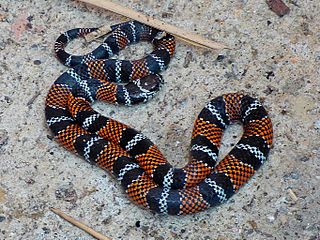 W
WErythrolamprus bizona, commonly known as the double-banded false coral snake, is a species of colubrid snake, which is endemic to northern South America and Central America.
 W
WLampropeltis abnorma, commonly known as the Guatemalan milk snake, is a species of milk snake.
 W
WImantodes cenchoa is a species of rear-fanged colubrid snake distributed in Mexico, Central America, and South America.
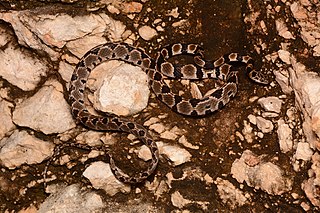 W
WImantodes gemmistratus is a snake species in the colubrid family, found from Mexico, through Central America and Colombia.
 W
WLachesis, also known as bushmasters, is a genus of venomous pit vipers found in forested areas of Central and South America. The generic name refers to one of the Three Fates, Lachesis, in Greek mythology who determined the length of the thread of life. Four species are currently recognized.
 W
WLachesis stenophrys is a venomous pit viper species endemic to Central America. The specific name, stenophrys, is derived from the Greek words stenos, meaning "narrow", and ophrys, meaning "brow" or "eyebrow". No subspecies are currently recognized.
 W
WLeptodrymus is a genus of snake in the family Colubridae that contains the sole species Leptodrymus pulcherrimus. It is known as the striped lowland snake or green-headed racer.
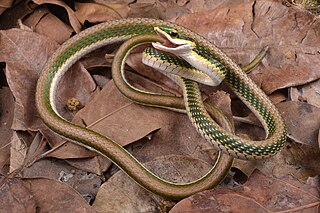 W
WLeptophis mexicanus, commonly known as the Mexican parrot snake, is a species of medium-sized slender snake in the family Colubridae. The species is endemic to the Americas.
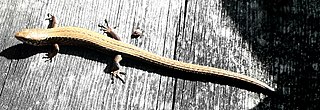 W
WMesaspis moreletii, commonly known as Morelet's alligator lizard, is a species of lizard in the family Anguidae. The species is endemic to Central America.
 W
WThe Meso-American slider is a species of turtle belonging to the family Emydidae. The species is distributed from Mexico to Colombia.
 W
WMicrurus nigrocinctus, commonly known as the Central American coral snake, is a species of a highly venomous snake in the family Elapidae. The species is endemic to Latin America from southern Mexico, Central America, to north Colombia. There are six recognized subspecies, including the nominate subspecies described here.
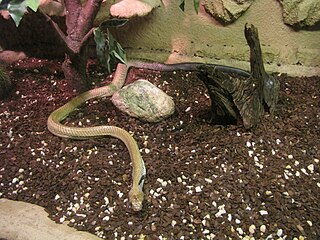 W
WThe Middle American indigo snake, also known commonly as the blacktail cribo, is a species of large, nonvenomous, snake in the family Colubridae. The species is endemic to the southwestern United States, Mexico, Central America, and northern South America. In addition to the nominotypical subspecies, it has four other recognized subspecies, including D. m. erebennus commonly known as the Texas indigo snake.
 W
WThe Nicaraguan slider is a species of turtle in the family Emydidae. The species is endemic to Nicaragua and Costa Rica. Formerly it was considered a subspecies of Trachemys scripta, but was elevated to its own species level.
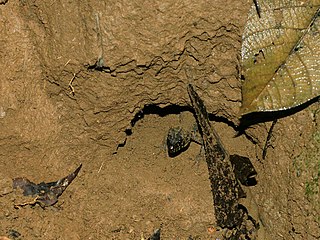 W
WThe yellow-spotted tropical night lizard or yellow-spotted night lizard is a species of night lizard. It is distributed from central Mexico through the Central America south to Panama. It includes four subspecies:Lepidophyma flavimaculatum flavimaculatum Lepidophyma flavimaculatum ophiophthalmum Lepidophyma flavimaculatum tehuanae Lepidophyma flavimaculatum tenebrarum
 W
WNinia sebae, commonly known as the redback coffee snake or the red coffee snake, is a species of small terrestrial snake in the family Colubridae. The species is endemic to Mexico and Central America south to Costa Rica. Although it resembles some venomous coral snakes in color and size, it is not venomous and seldom bites humans.
 W
WOxybelis fulgidus, commonly known as the green vine snake or the flatbread snake, is a species of long, slender, arboreal colubrid snake, which is endemic to Central America and northern South America.
 W
WOxyrhopus petolarius, commonly known as the false coral, is a species of snake in the family Colubridae. The species is endemic to South America. There are three recognized subspecies.
 W
WPhrynonax poecilonotus is a species of nonvenomous snake in the family Colubridae. The species is endemic to the New World.
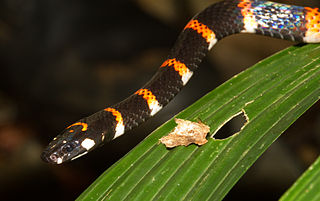 W
WPliocercus euryzonus, commonly known as Cope's false coral snake, is a species of snake in the subfamily Dipsadinae of the family Colubridae. The species is indigenous to southeastern Central America and northwestern South America. There are two recognized subspecies.
 W
WPolychrus gutturosus, also known as Berthold's bush anole or monkey tailed anole, is a species of lizard found in tropical Central and South America. It is sometimes referred to as a "forest iguana". It lives in forests and jungles from Honduras to Ecuador. It can reach up to 70 cm (2.3 ft) in total length, including its very long tail, and males are considerably smaller than females. This insectivorous lizard is a climbing species that can often be seen holding onto branches. It can even hold on with its hind legs, though it moves slowly that way.
 W
WPorthidium nasutum is a venomous pitviper species found in Mexico, Central America and northern South America. No subspecies are currently recognized.
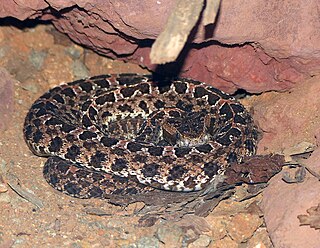 W
WPorthidium ophryomegas is a venomous pitviper species found in Central America. No subspecies are currently recognized.
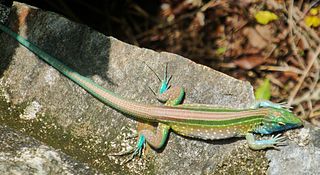 W
WThe rainbow whiptail is a species of lizard found in Central America, the Caribbean, and northern South America. It has also been introduced in Florida and has established populations there. A rainbow whiptail grows up to approximately 12 inches (30.5 cm).
 W
WRhinobothryum bovallii, commonly known as the coral mimic snake or the false tree coral, is a species of snake in the family Colubridae. The species is endemic to Central America and northwestern South America.
 W
WScaphiodontophis venustissimus, commonly known as the common neckband snake, is a snake of the colubrid family.
 W
WSibon dimidiatus is a species of snake in the family Colubridae. It is found in Central America.
 W
WSibon longifrenis is a species of snake in the family Colubridae. It is found in Panama, Costa Rica, Honduras and Nicaragua.
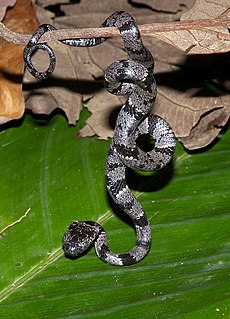 W
WSibon nebulatus, commonly known as the clouded snake, is a species of small, slender arboreal snake which is found in southern Mexico, Central America, northern South America, Isla Margarita, and Trinidad and Tobago.
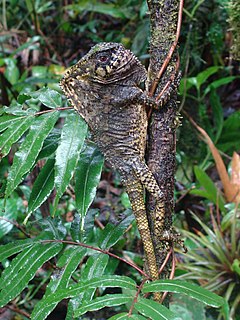 W
WThe smooth helmeted iguana, sometimes also known as helmeted iguana, helmeted basilisk, elegant helmeted lizard, etc., is a species of New World lizard in the family Corytophanidae.
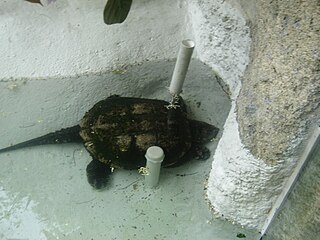 W
WThe South American snapping turtle is a species of turtle in the family Chelydridae. This species, which is endemic to Central and northwestern South America, was previously considered a subspecies of Chelydra serpentina. Its restricted range in South America reflects its recent arrival there as part of the Great American Interchange.
 W
WTantilla melanocephala, commonly known as the black-headed snake, is a species of small colubrid snake endemic to Central America and South America.
 W
WThamnophis proximus, commonly known as the western ribbon snake, is a species of garter snake in the subfamily Natricinae of the family Colubridae. The species is endemic to the western United States, Mexico, and Central America. The species has six recognized subspecies.
 W
WUngaliophis panamensis, or the Panamanian dwarf boa, is a species of snake in the family Tropidophiidae. It is native to Nicaragua, Costa Rica, Panama, and Colombia.
 W
WThe white-lipped mud turtle is a species of mud turtle in the family Kinosternidae. The species is endemic to Central America and northwestern South America.
 W
WGonatodes albogularis, which has been called a number of vernacular names in English, is a smallish species of gecko found in warm parts of Central and South America, Cuba, Hispaniola and Jamaica. It is sexually dimorphic: the male is colourful, while the female is a more drab grey. The fingers do not have lamellar pads for climbing smooth surfaces like many other geckos but instead have normal claws like most lizards. At one time the species had a breeding population in southern Florida, especially Key West, but this population appears to have died out by the early 1990s.